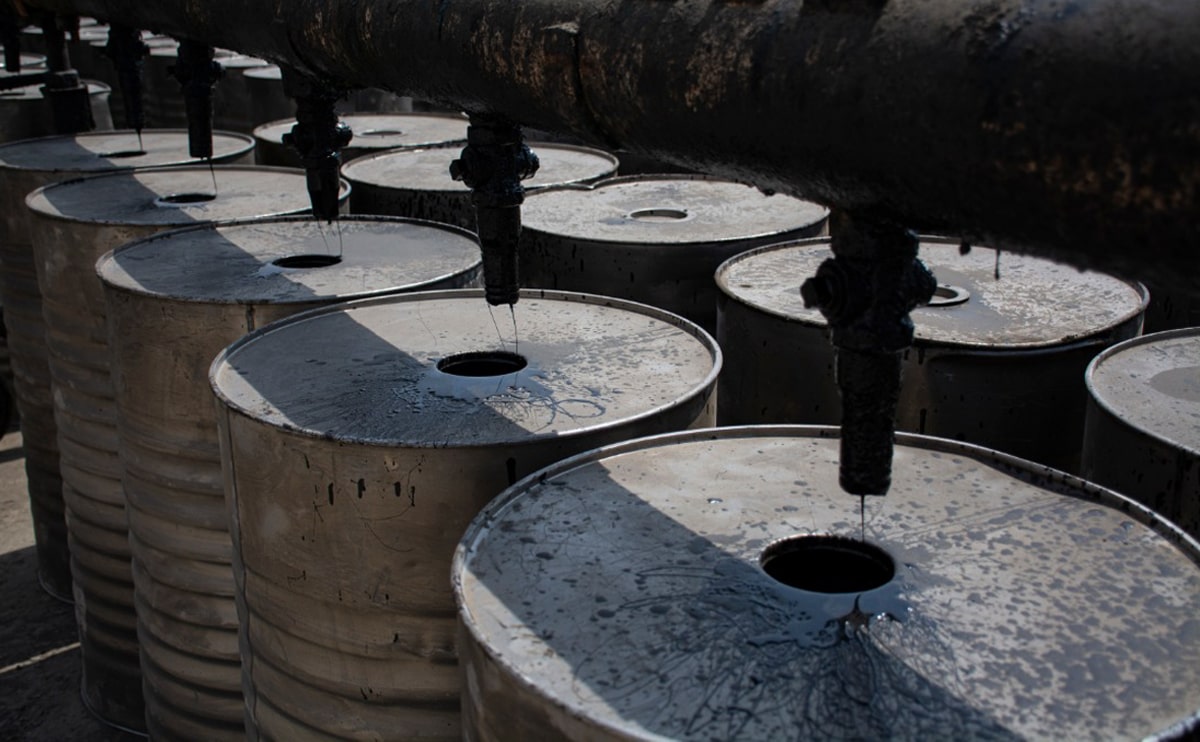The types of bitumen were briefly explained in this article.
What is bitumen?
Bitumen is a black to dark brown hydrocarbon substance that dissolves completely in carbon sulfur and carbon tetrachloride. Bitumen is solid at ambient temperature. But as the temperature increases, it turns into a paste and then becomes liquid. The important use of bitumen is due to the presence of two important properties of this substance; Being impermeable to water and being sticky.
Bitumen extracted from oil or special minerals is called pure bitumen, which is classified according to its origin. Pure bitumens are also subjected to other processes in order to find the desired properties for different applications and form different types of bitumen (including blown bitumen, soluble bitumen, emulsion bitumen, polymer bitumen, etc.).
Tar tars
Black and hard materials that are actually the residue of coal tar distillation. Their freshly broken surface is shiny and they melt with a rapid drop in viscosity when heated, although their melting temperature depends on their production method.
Petroleum bitumen and natural bitumen
Bitumen is usually obtained from the distillation of crude oil. This kind of bitumen is called petroleum bitumen or distillation bitumen. This category of bitumen, whose origin is crude oil, are solid and semi-solid bitumens that are obtained directly from the distillation of crude oil or by other additional operations such as blowing air, and compared to other types Bitumen has more uses and higher consumption. Oil bitumen is the product of two stages of crude oil distillation in the distillation tower. In the first stage of distillation, light substances such as gasoline and propane are separated from crude oil. This process is carried out at a pressure close to atmospheric pressure. In the second stage, heavy compounds such as diesel and kerosene are removed. This process takes place in a pressure close to vacuum. Finally, a mixture of very fine solid particles called asphaltene remains, which is immersed in a grease-like fluid called maltene.
But some types of bitumen are obtained in nature as a result of the gradual transformation of crude oil and the evaporation of its volatile substances over many years. Such bitumen is called natural bitumen and it is more durable than petroleum bitumen. Such bitumen may be pure in nature (lake bitumen) such as Behbahan bitumen lake in Iran and Trinidadian bitumen lake in America, or it may be extracted from mines (mineral bitumen). Natural bitumen is also known as Uintaite, these bituminous materials that are naturally created under the influence of atmospheric factors and the passage of time are used without the need for distillation methods and are very diverse in terms of composition and properties.
blown bitumen
Blown bitumen is obtained by blowing hot air into pure bitumen in the last step of the refining process. In this process, hot air with a temperature of 200 to 300 degrees Celsius is blown into the chamber containing bitumen through perforated pipes. As a result of this process, the hydrogen atoms in the bitumen hydrocarbon molecules combine with the oxygen in the air and the polymerization process takes place with the formation of water. Compared to pure bitumen, blown bitumen has a lower degree of penetration, a higher degree of softness and less sensitivity to temperature changes. This type of bitumen is mostly used in making roofing sheets, car batteries and plating. The abbreviation of blown bitumen is R. For example, bitumen 80/25 R means blown bitumen with 80 degree of softness and 25 degree of penetration.
Mixed or soluble bitumen
The sale of mixed bitumen refers to a mixture of bitumen and a suitable solvent (for example, kerosene or gasoline). This bitumen is liquid at ambient temperature or it turns into liquid with a little heat. Mixed bitumen is used in all types of covering asphalt and macadamia. The speed of setting or hardening of this type of bitumen depends on the type of solution. For example, due to the high rate of evaporation of gasoline, bitumen dissolved in gasoline hardens faster. This bitumen is called quick-acting bitumen (RC). Also, bitumen dissolved in oil is called retarding bitumen (MC) and bitumen dissolved in gas oil or fuel oil is called retarding oil (SC). Soluble bitumens are graded based on the degree of viscosity.
bitumen emulsion
Emulsion bitumen is obtained by mixing bitumen, water and an emulsifier. The amount of emulsifier is very low, around 0.3 to 0.5% of bitumen weight. The amount of water used in this type of bitumen is about 30 to 50% of the bitumen weight. The emulsifier is usually an alkaline salt of organic acids or an ammonium salt, which charges bitumen particles. In this way, bitumen particles repel each other due to the induced charge and float in water as spheres with a diameter of one hundredth to one thousandth of a millimeter. The use of this type of bitumen reduces environmental pollution and because oil or flammable solvents are not used, the risk of ignition during bitumen transportation is reduced. Emulsified bitumen is used for cold asphalt in wet environments or for insulation, in which case water must be added to it again and its content is about 65%.
Information about the applications of bitumen and bitumen chemistry is written in the content of the site.


